Kyoto is chill city in the central-western part of Japan on the island of Honshu. It is a city of history and culture. Also, Kyoto used to be the capital city of Japan before it moved to Tokyo in 1868.
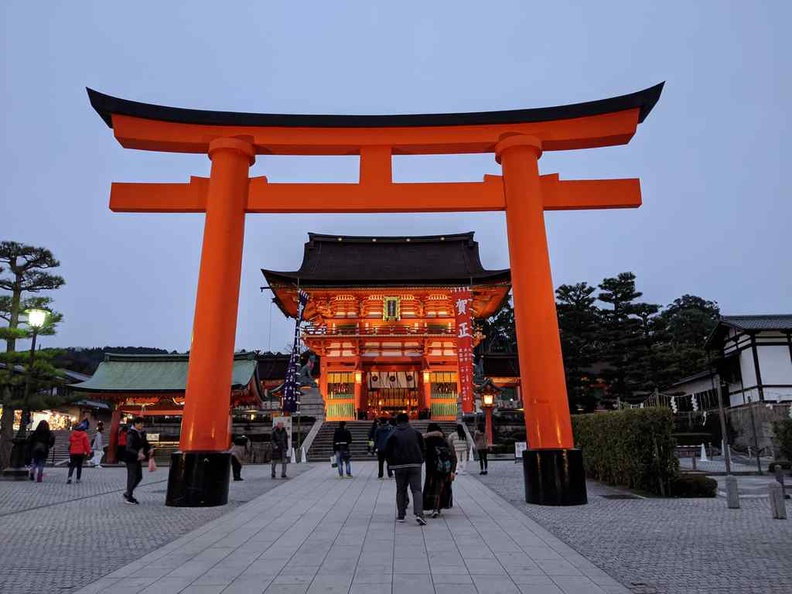
Moreover, the city itself is well served by a good network of underground metro subway and above ground buses. Buses are also particularly useful when travelling out to cultural areas not served by the Kyoto subway system. Also, these buses serve several ancient popular shrines are usually located on the outskirts of the city center. Hence, given the travel time, this usually involves the need for a half-a-day commitment for trips out of the city center. Notable sights includes a bamboo forest, an Inari shrine and a golden temple I shall cover later in this article.
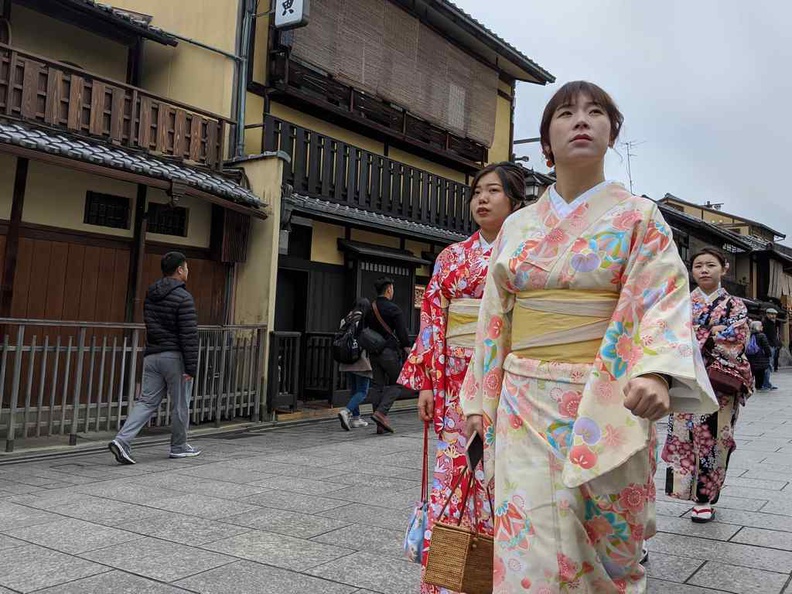
Additionally, besides public transport, Kyoto city is also very walkable. This is especially so in the Kyoto old town area which I shall cover bit later in this article. Also, this is where you can find most of Kyoto’s old historical buildings preserved till today. Notable these buildings stood the test of time surviving till today and the world war.
Kyoto city center and shopping district
The Kyoto city center is where the main central station is. It is located just in front of the iconic, but not-so-tall Kyoto tower. Also, given the close proximity of Kyoto is to Nara city and Osaka, it is not uncommon for Kyoto main train station to run frequent regional district trains between the 3 cities. This is notably much cheaper than taking the Shinkasen bullet train, especially for a day trip to Nara
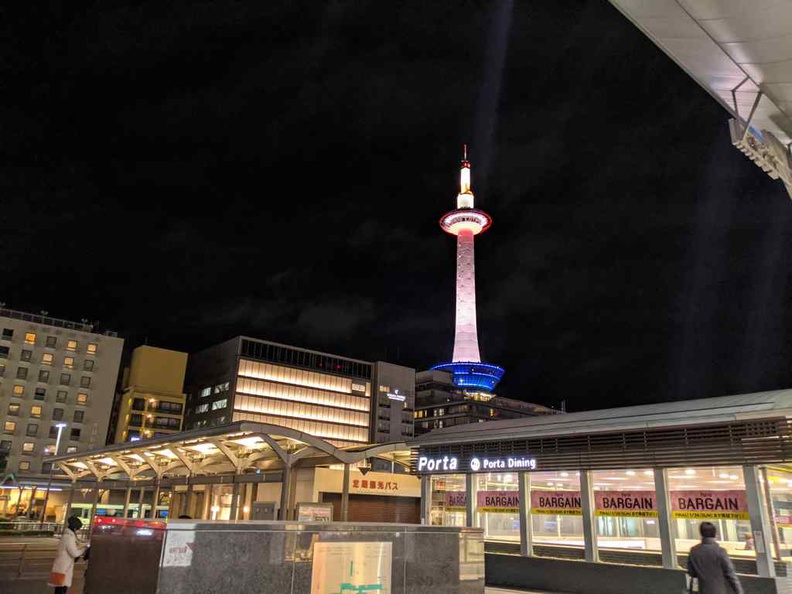
Moreover, there is a shopping district in the Nakauoyacho city center area. It is near the Karasuma and Shijō metro station district area. Also, here, you can find large malls by Daimaru, Tokyu Hands and Takashimaya. It is enough to keep the most demanding shoppers satisfied for your short stay here.
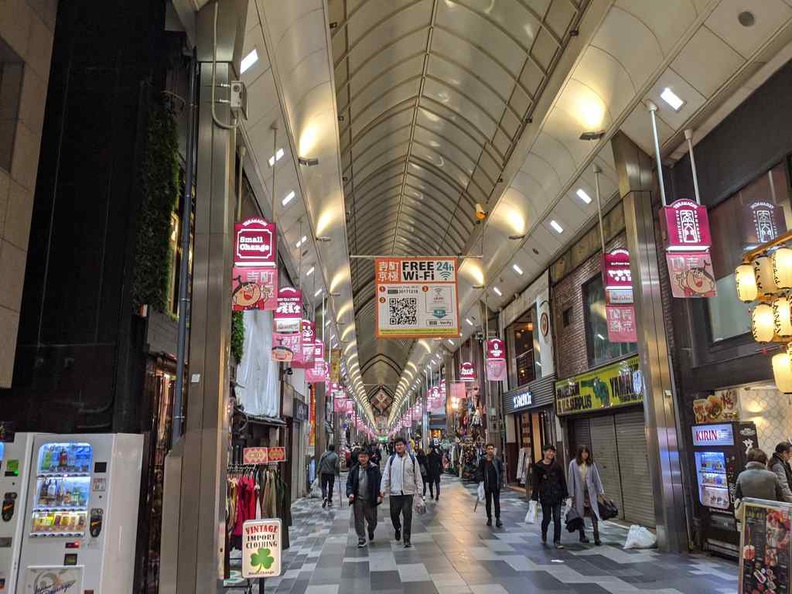
Interestingly, there is even a large Pachinko parlor here too. It is a quirky metal-ball arcade meets gambling machine. Though it is pretty much for lols on my visit.
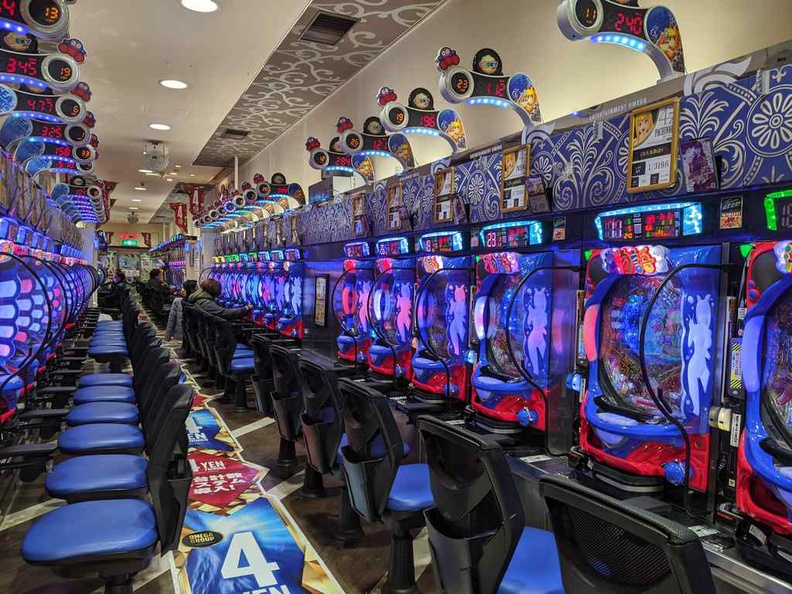
Nishiki Market and Teramachi Shopping District
Additionally, the city center highlight here is Nishiki Market. It is a spacious Shijo Street with long rows of shops lined along a sheltered pedestrian street. Also, it is a thriving shopping street and is largely frequently by locals and tourists.
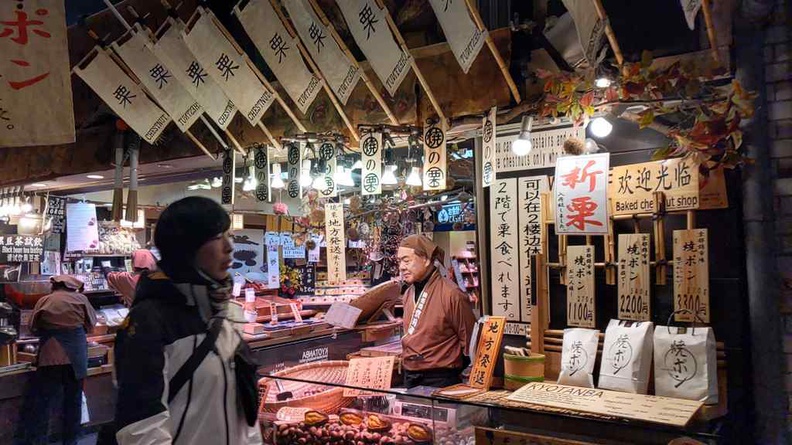
In the day, you can find stores hawking fresh and preserved produced such as dried good and fresh seafood. By night, the Teramachi Street Shopping District area transforms into rows of night life shops, bars and restaurants. Additionally, do check out Pontocho Alley here. It is home to many geiko houses and traditional tea houses.
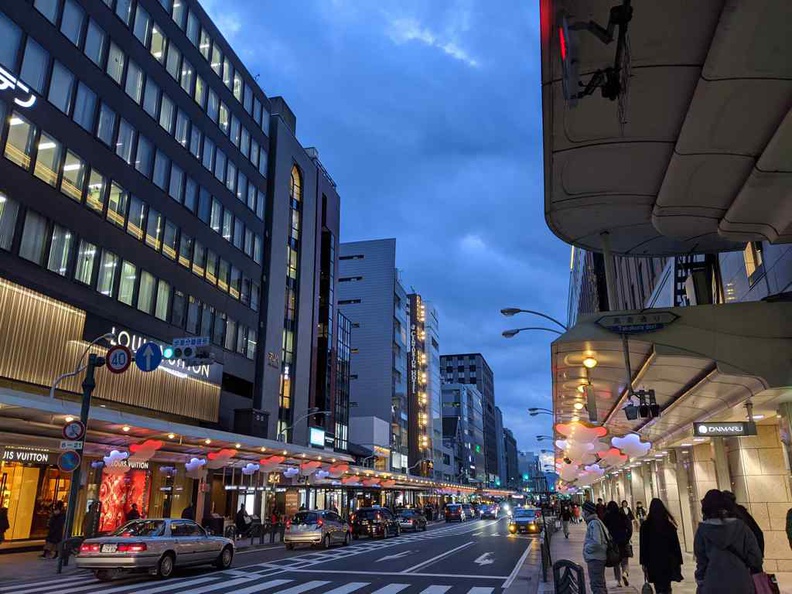
Furthermore, the nearest metro station to the Nishiki Market Shopping District is Karasuma Station. There are several notable lines of shops here.
Gachapon and Affordable Kobe beef
Miscellaneous musings include a Samurai & Ninja Museum with Experience, and an Owl café where you can dine with the birds. Also, if you are a Gachapon lover, you are in luck as there are rows and rows of shops hawking the capsules here.
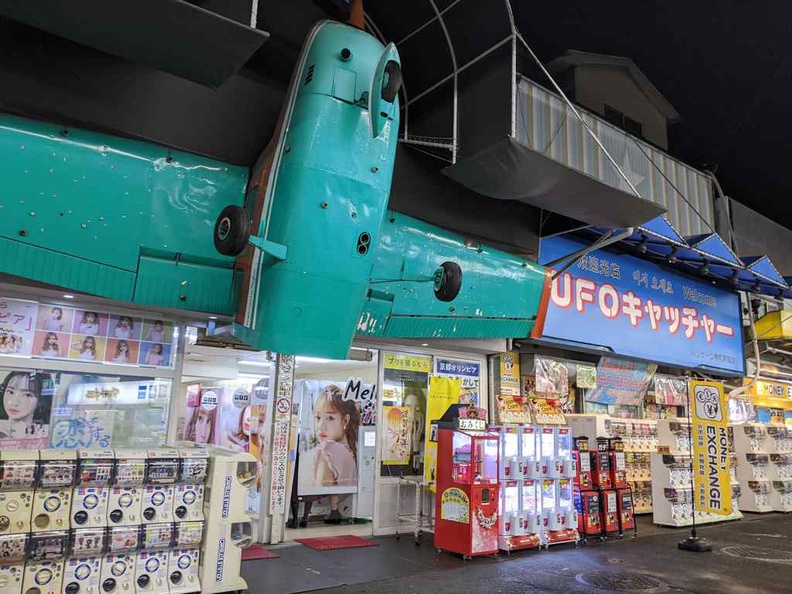
Additionally, I also had the chance to try affordable Kobe and Wagyu beef at a table BBQ restaurant here in the Kawaramachi shopping district. Not bad I say.

Notably, Kyoto has sights on pretty much all areas of the city. It is a rather sleepy town in comparison to Tokyo and Osaka. With most shops closing by 9-10pm. Also, Kyoto is a small city compared to other major Japanese cities. The city center is walking distance to Kyoto old town.
Kyoto old town, a walk through history
Moreover, Kyoto is famous for its numerous classical Buddhist temples, as well as gardens, imperial palaces, Shinto shrines and traditional wooden houses. You can find several of them right in the heart of Kyoto old town. The best part is that it is within walking distance across Kamo river from Nishiki Market and Kyoto central shopping district.
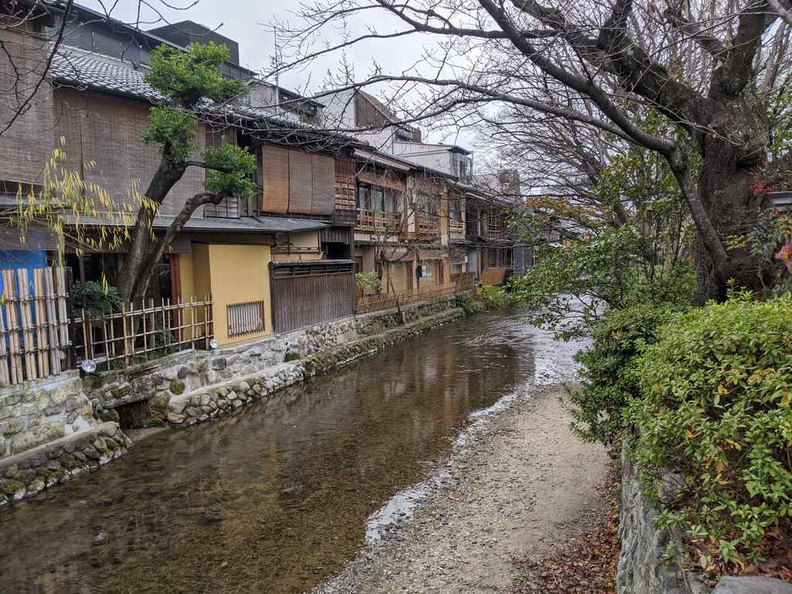
Additionally, this walk is what I like to call an ancient walk back into time. Old town Gion area is home to the Kanikakuni monument, Gion Shin Bridge and a Hardrock café. Also, if you come in March, this passageway is filled with nice rows of cherry blossom blooming over the river bridges.
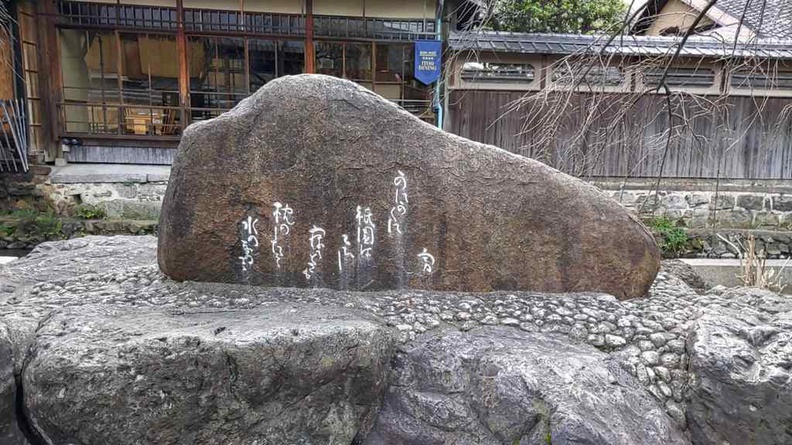
Hanamikoji and Sanneizaka Street
Moreover, do check out Hanamikoji and Sanneizaka Street. These old streets are literally live history books. Much had been done here to preserve the look and feel of the buildings here.
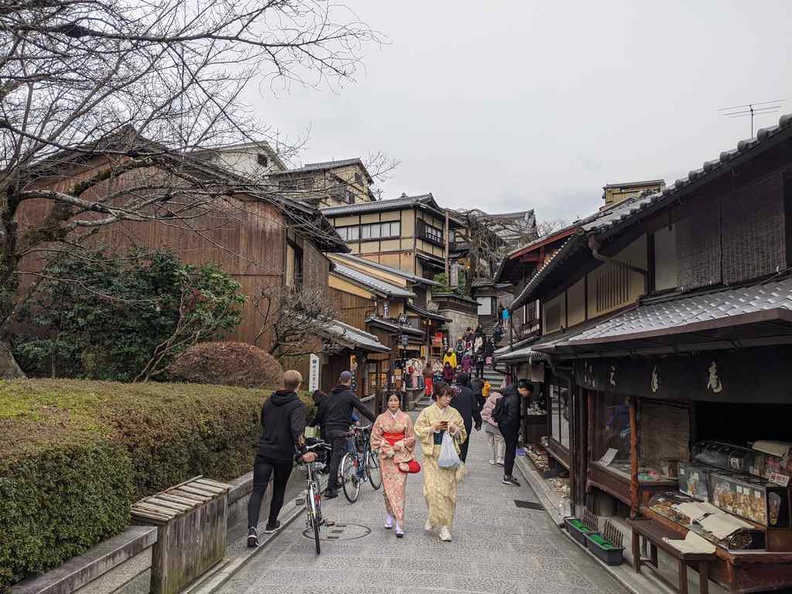
Rows of shops sit behind aged old wood walls lined along cobblestone pathways. The alleyways are narrow and buzzling with shops at every corner. It does have an old trading town feel to it. Do look out for shops selling spicy peppers (Shijimi).
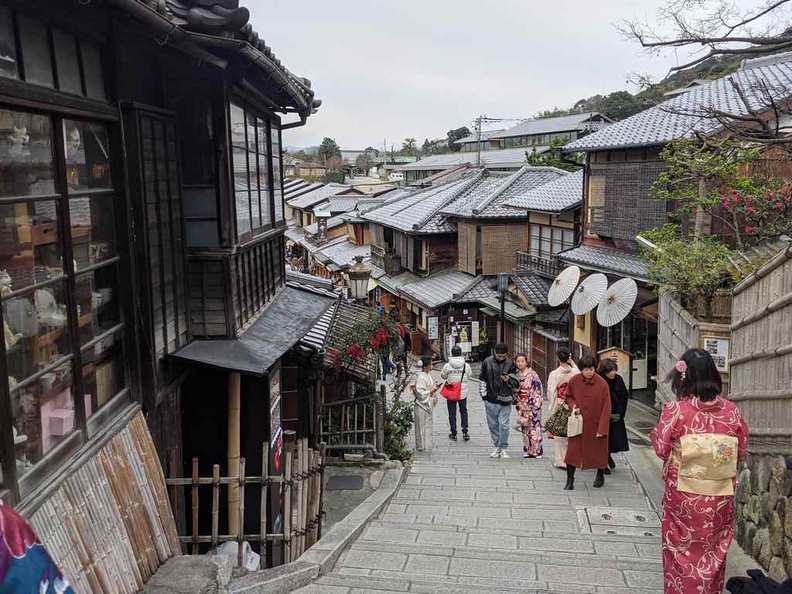
Notably, most of the Geishas you see on the streets are tourists. You tend to see more local Geishas on the spring months. Also, you can dress up as one too by renting one at one of the many costume shops here for 3000 yen per day.
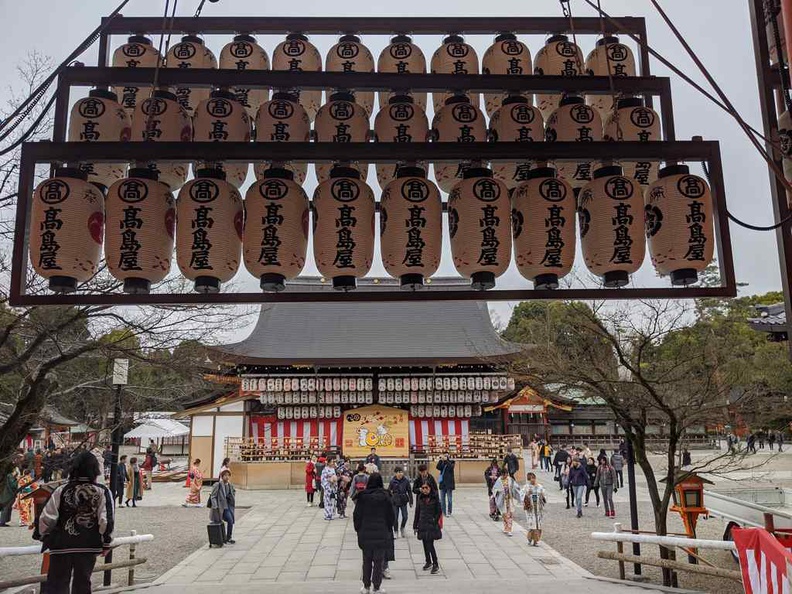
Also, you can visit a number of notable shrines and temples in Kyoto old town in costume. These temples are dedicated to Buddhist and Shinto religions.
Kiyomizu-dera temple
The highlight of Kyoto old town will be the Kiyomizu-dera temple. It is a UNESCO world heritage historic temple built in 778 AD with a Japanese Buddhist architecture style. Also, it offers picturesque views from a hill and an all-wooden pavilion building.
Entry costs 300 yen (about S$4) allowing you to enter the central building and a walk through the temple park and pagoda area. There is also a tiny Otowa Waterfall which you can use long cups to catch the water for holy blessings.
Also, do also check out in the heart of old-town Kyoto at the east end of Shijō-dōri, the Yasaka Shinto Shrine in the Gion District. It is also known as the Gion Shrine with the Yasaka Pagoda.
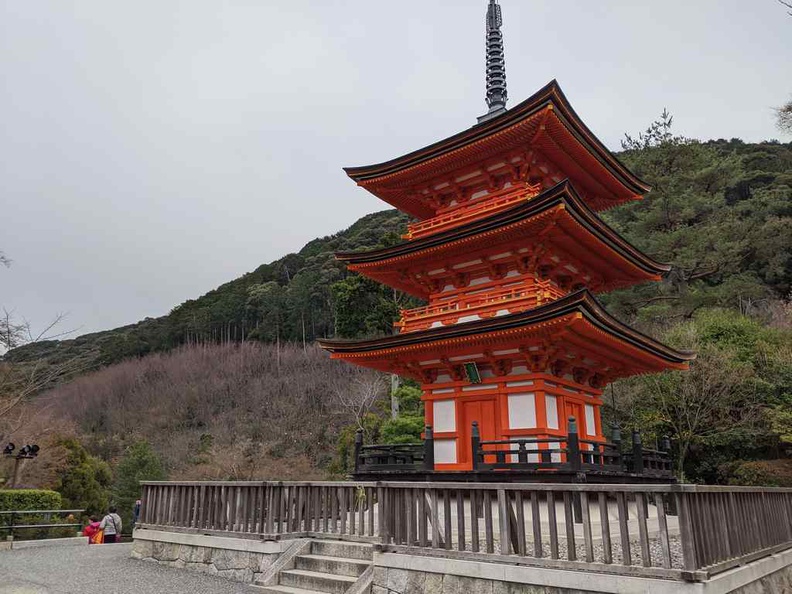
Moreover, the Shrine was erected in 656 A.D. & is home to one of the most famous festivals in Japan. Topping up, we also have, the Hōkanji Temple, 5-story Buddhist pagoda temple. You can get pretty good sweeping views of the town from the top.
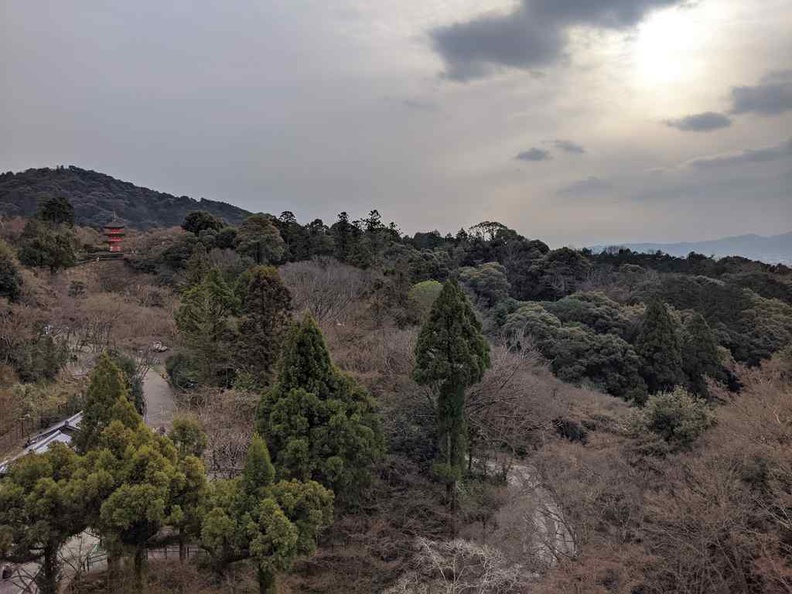
Additionally, you can get pretty good scenic views of a hill side from Kiyomizu-dera Temple. You can see the Taisanji Temple Pagoda sitting on the forested hill. Also, you can catch views of Kyoto city from the vantage point too.
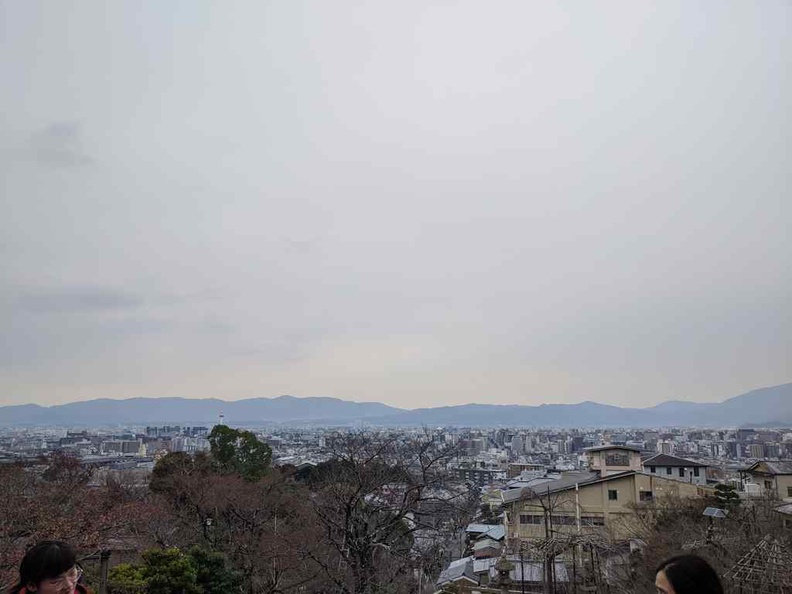
Is that a Starbucks?
Peculiar sights in old town Hashimotocho area includes a Starbucks Coffee shop which is so well hidden with the olden façade. Called the Starbucks Coffee Kyoto Ninenzaka Yasaka Chaya, it takes a keen eye to actually notice it’s presence.
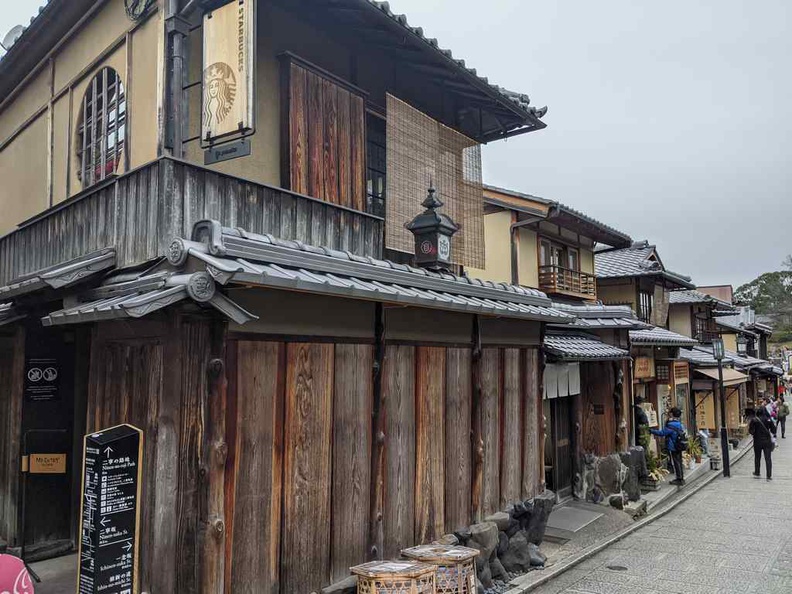
This also does not stop patrons from packing this otherwise rather popular old town coffee break destination. Inside, the story is consistent, with traditional tatami mats which guest can sit on with their shoes out. There are also traditional tabled seating available too.
North Kyoto Kinkaku-ji Golden Pavilion
On North Kyoto we have the Kinkaku-ji Temple. Also known as the Golden Pavilion, this iconic, serene, gold-colored temple offers a tranquil view with a reflecting pond. It does give it one of the most picturesque views you can obtain in Kyoto, and well worth the 400 yen entrance fee.

Moreover, if you are lucky at times you can find a nesting crane or two on the grass verges within the temple grounds. It goes in a linear fashion through the temple grounds. Also before leaving, do check out the various Omamori lucky charms sold at the temple gift shop near the exit. There is one charm for every occasion.
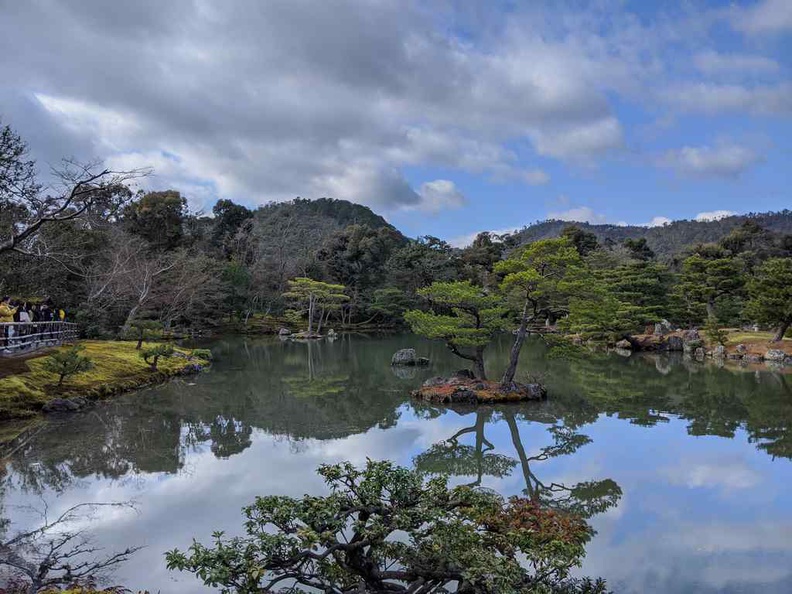
Getting to the Kinkakuji Temple in west Kyoto involves a direct bus from the city cente. It goes straight to the temple. It costs about 230 yen for a single bus trip on Kyoto City Bus services no.204, 205, 101 or 102.
Additionally, if you have time, you could consider visiting the sister pavilion to the gold pavilion. Called the Higashiyama Jisho-ji shrine (East) Ginkakuji (Silver Pavilion), though the beautiful temple not actually covered in silver, and does not look as impressive as the golden one. Also, alternatives also include the Ryoanji Temple (stone garden Zen temple temple) down on the east-side of Kyoto.
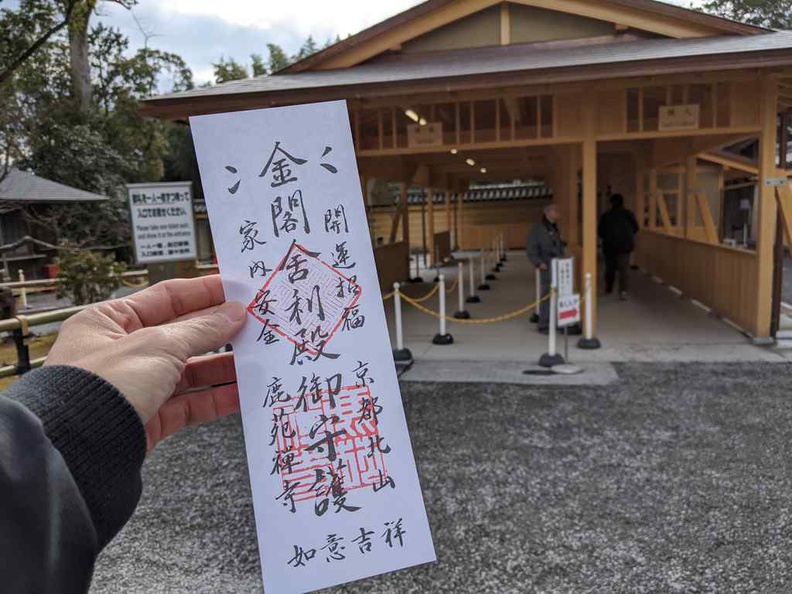
South Kyoto Fushimi Inari Taisha
Furthermore, down south of Kyoto, a highly recommended attraction is the Fushimi Inari Taisha Shrine. It is a Japanese Shinto fox shrine with famed gates which seem to go on and on.
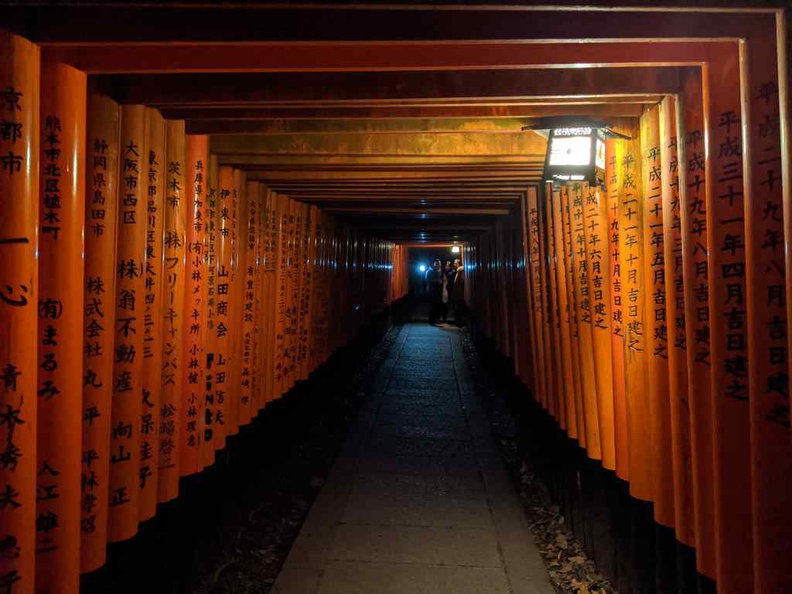
Moreover, getting there involves a direct metro ride to Inari Station down south. Giant gates, a couple of night food stores and a temple shrine area greets you at the entrance. Also, notably, it beckons you on what to expect on the journey ahead. Here, you can find a row of steps at the back of the temple are where the frramed archway reside.
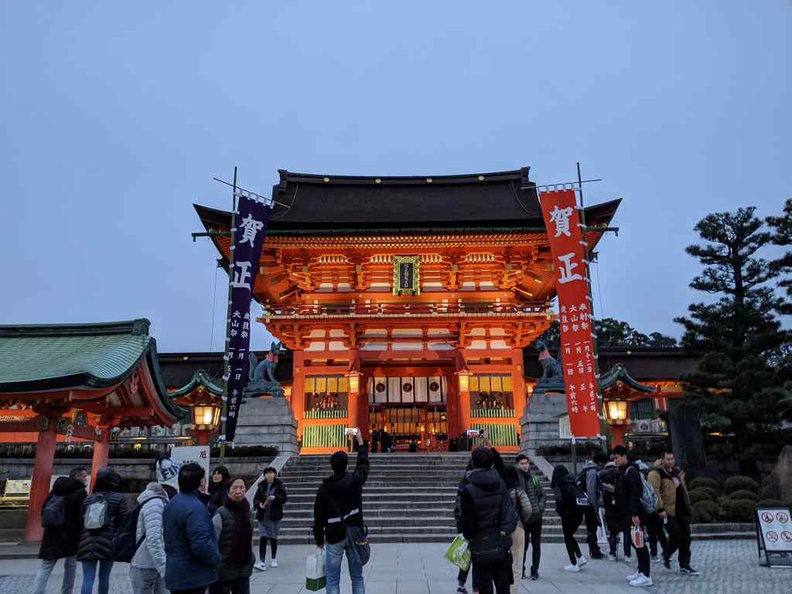
Notably, the Fushimi Inari Taisha is free to enter and open 24 hours a day, allowing you to explore the gates at night. However, just keep an eye out and distance yourself from wild boars as I saw a couple of them foraging for food in the forest.
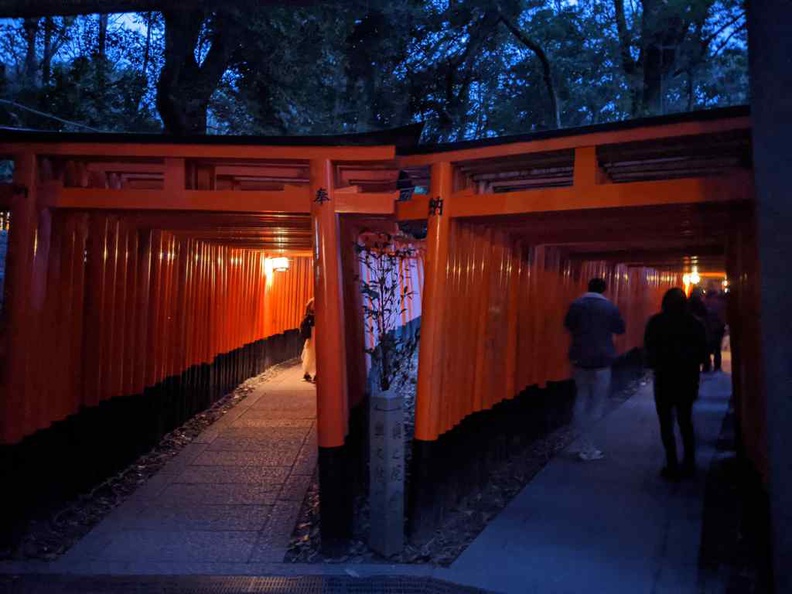
Also visibility is still good at night with pathways regularly lit by lamps, and devoid of tourist crowds. This offers great clear photo opportunities where you can photograph rows of the gates devoid of people. Additionally, when navigating stairs, the use of light shadows on the steps is a good way to predict the height and depth of the steps, especially when abseiling the mountain.
Up the Inari Mountain!
Each of the famed gates size at the Shinto shrine were erected based on a monetary contribution from its owners. Hence, the larger the gate the more expensive it is. Also, it is not uncommon to see a varying and disparate degree of archway sizes on your climb up the pathways.
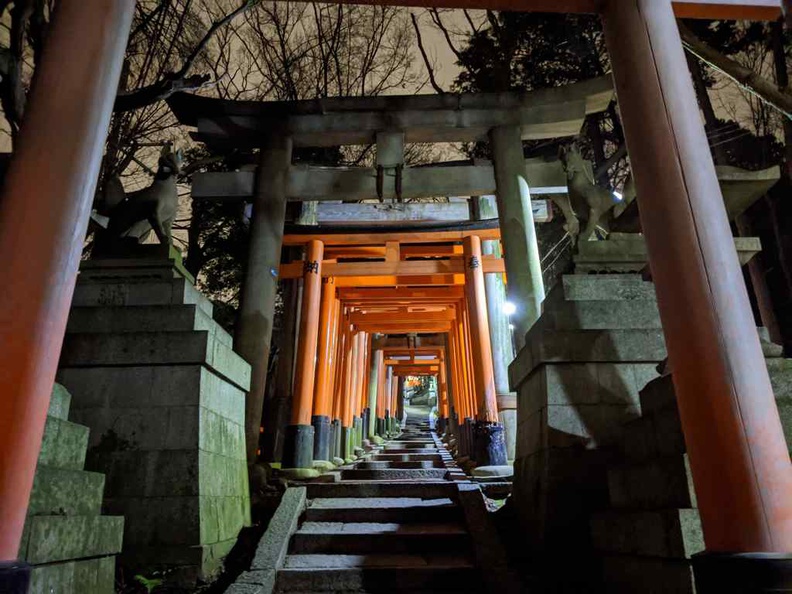
Moreover, a leisurely climb up the top of the Fushimi Inari mountain takes about 2 hours up and about an hour down. Also, the climb is not physically exhausting as most of the steps are low and shallow.
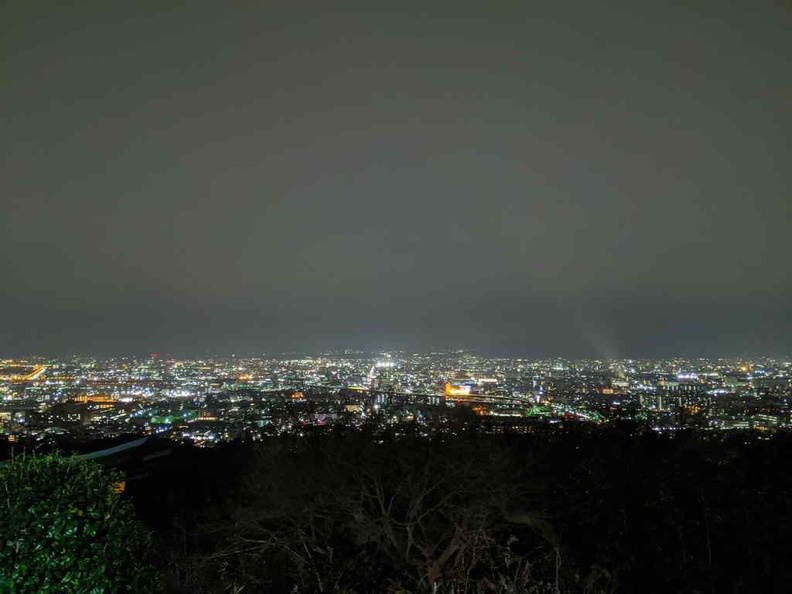
On your way up, you pass by several tiny little shrine pockets, each with their own altar. You find a reflecting river midway up the climb as well as a viewing point with great views of Kyoto and Yotsuji city.
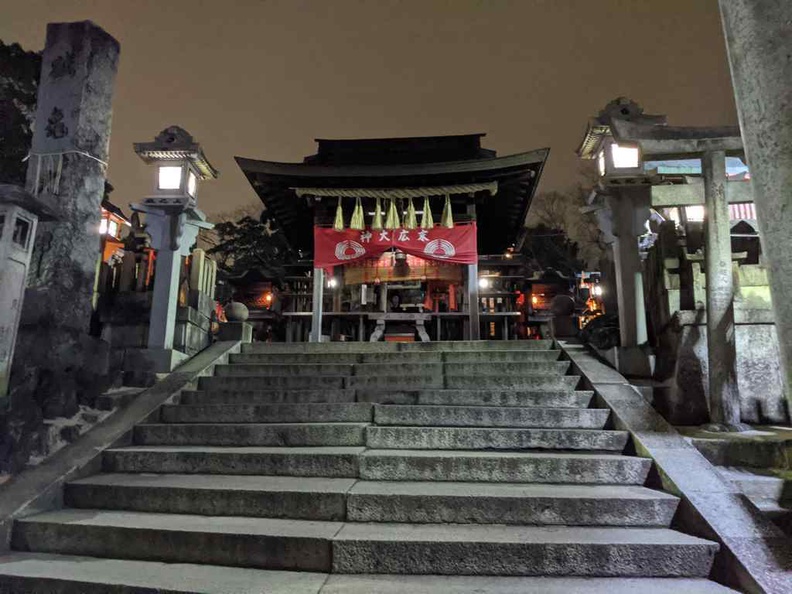
Additionally, there are notably no views up at the summit, but a small shrine pocket. A summit sign distinctively marks your achievement of reaching the highest point of the mountain. Also, the climb runs in a loop with you returning to the market place and temple shrines at ground level.
West Arashiyama Bamboo Grove forest
The last of the recommended areas in Kyoto is the Arashiyama Bamboo Grove in west Kyoto, located in Susukinobaba-chō, Ukyō Ward, Kyoto, Japan.

It is also known as the Path of Bamboo and is one of the chill little towns with a bamboo forest and temple. Also, the forest is also known to be home to monkeys, though I didn’t see any on my visit.
Moreover, Arashiyama is a 15 minute walk from the Saga-Arashiyama train station which you can take from Central Kyoto after a 30 minute train ride. You enter a trail pathway with tall Bamboo plants growing along the path side with ungulates into a forest. Here, the path however is just under couple of hundred meters in length, and not as spectacular as Chinese Panda bamboo forests. But offers great photo opportunities and many, many crowds of tourists. Crowds are generally thinner in the early morning.
Tenryuji Temple
Furthermore, in the Arashiyama area is the Tenryuji Temple which I recommend visiting on your trip here in West Kyoto. Also, the temple has a nice zen garden which you can tour as part of the steep 500 yen entrance fee, as well check out the central building and reflecting lake.
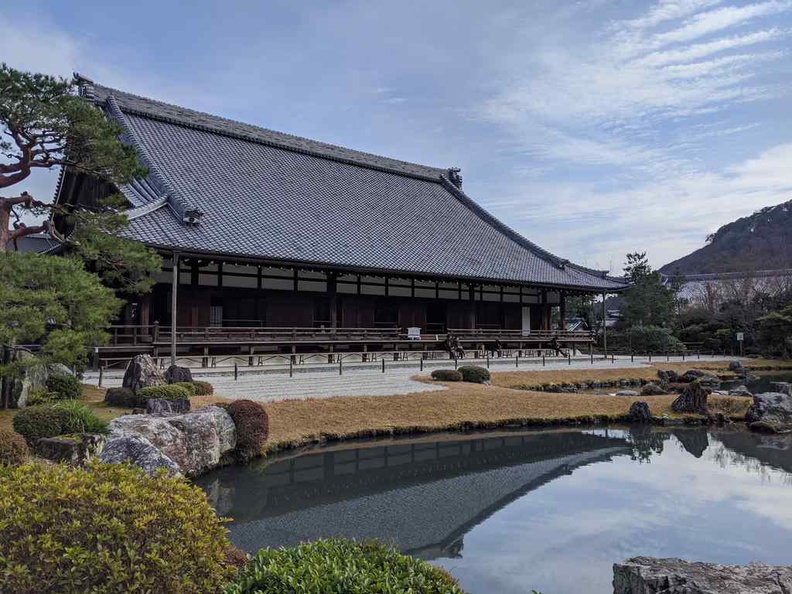
Also, the temple was founded by Ashikaga Takauji in 1339, and subsequently opened in 1345. Notably, Tenryū-ji is a branch of the Rinzai sect of Zen Buddhism.
All in all, Kyoto is an enjoyable small sleepy city of culture and history. It is a good break of tranquil away from the buzzing metropolis of Tokyo city or Osaka city. There is plenty of culture in every corner.

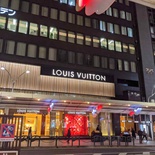
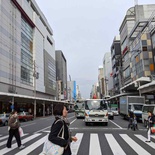
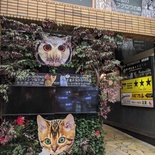






























[…] Kyoto city, Japan […]